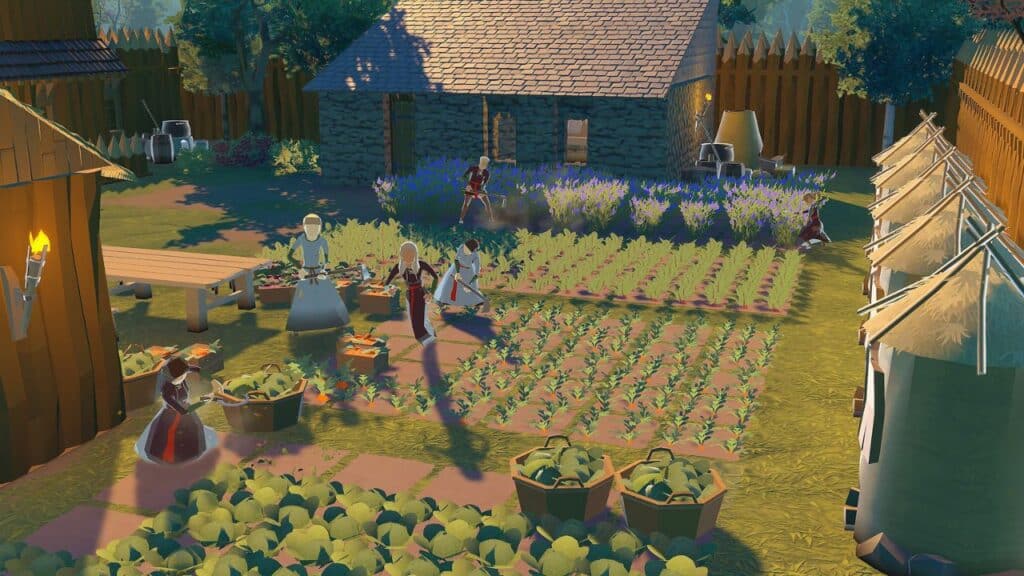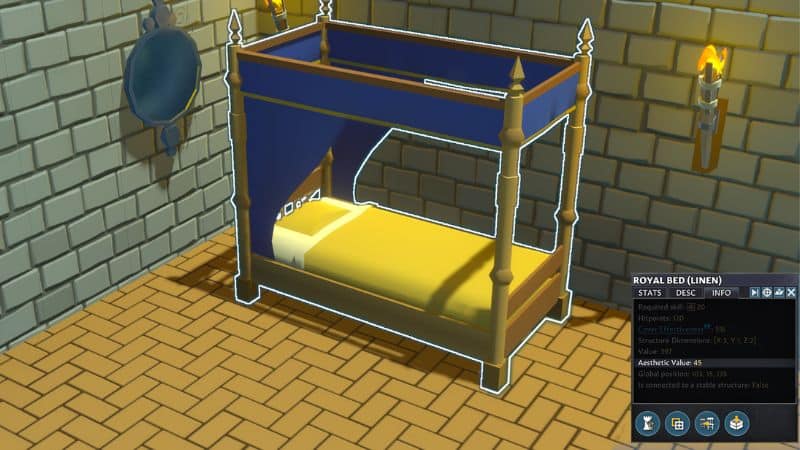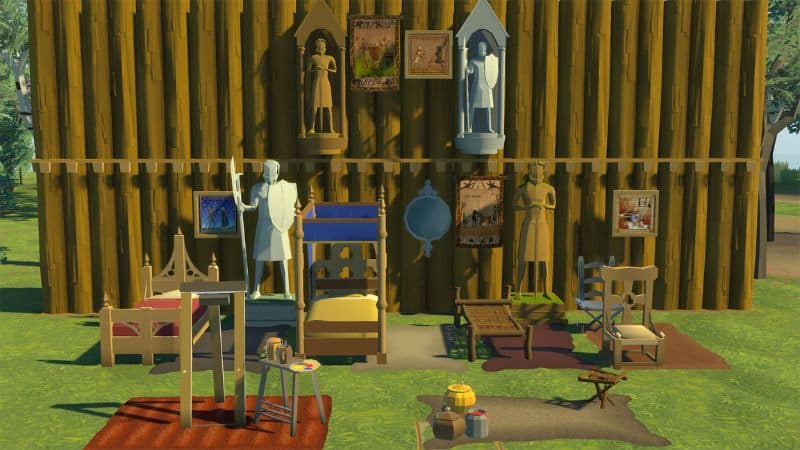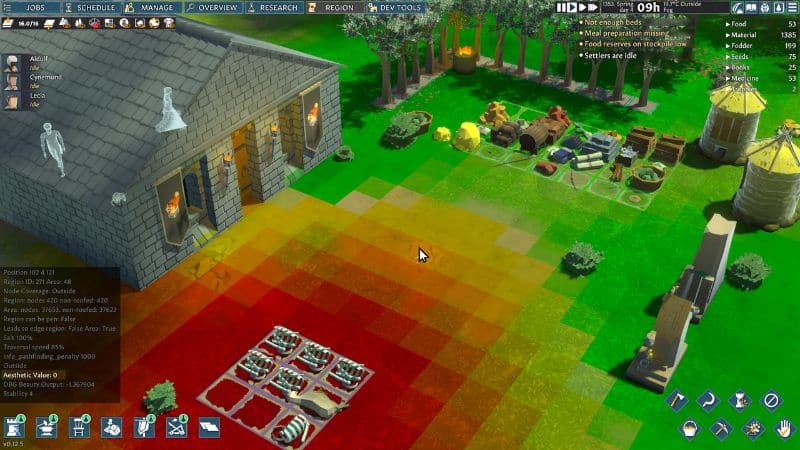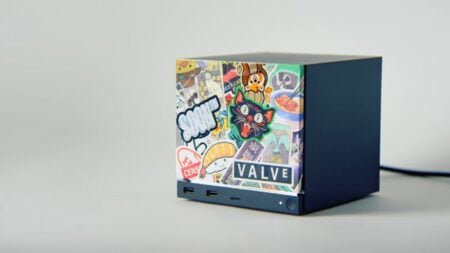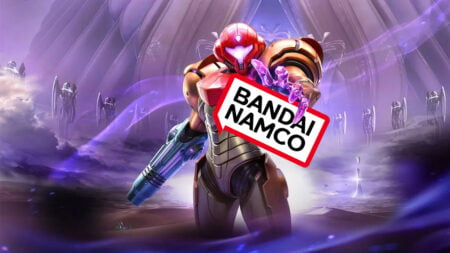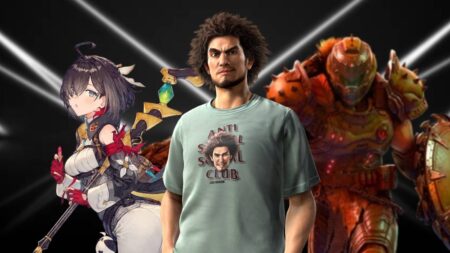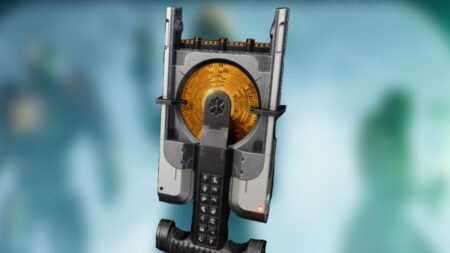Foxy Voxel has released a major update #7 for Going Medieval, and we have compiled the complete list of patch notes and changes here. According to the ‘Beauty and Comfort’ official patch notes, today’s update for Going Medieval contains several fixes. Improvements introduced include bedroom ownership, aesthetic and comfort values, new furniture, and other tweaks. And now, let’s have a look at the official Going Medieval update #7 (Beauty and Comfort) patch notes.
Going Medieval Update #7 Patch Notes
Improvements
Bed and Room Ownership
Settlers can finally have their beds, even rooms. You can assign settlers manually to beds (via the info panel), or when the night comes, they’ll choose beds and, in that process, acquire ownership. Some things to note about beds:
- Beds are built as unassigned.
- If an assigned bed is on the map for that settler, the settler will seek it when the time comes.
- If a settler has an assigned bed that’s unreachable/locked off, that bed will become unassigned, and the settler will seek a reachable bed.
- Nothing will happen if you change the assignment of a bed while in use. The ownership will revert to the settler sleeping on it, and a text will appear notifying the player.
- If you assign an empty bed to the settler sleeping somewhere else, that settler will immediately wake up and go to their new bed.
- A settler can’t have more than one bed assigned to them.
- A bed can’t have more than one assigned settler for it.
- If a settler is in a caravan, they will still retain the bed ownership.
- If a settler dies, their bed is automatically unassigned.
- If a settler is banished or given to raiders, their bed will be automatically unassigned.
- If an assigned bed is in a single bedroom, that bedroom ownership will transfer to that settler.
New Room Added
We are also introducing a new room type called “Infirmary.” The purpose of these rooms is to heal settlers and tend their wounds. Here is what you need to know:
- To turn a room into an Infirmary, you will have to build at least one infirmary bed and at least two infirmary shelves.
- Infirmary rooms can’t have shrines, entertainment structures, workstations, or regular beds.
- You need to research Infirmary beds before you can create them.
- Infirmary beds can’t be assigned.
- Settlers heal faster in the Infirmary, and tending has a higher chance of success.
- If a settler is wounded and wants to rest (convalescence), they will always go to an infirmary bed if possible.
- If a healthy settler doesn’t have any wounds and doesn’t have any other bed except the infirmary bed, they will still not sleep in the infirmary bed.
- Wounded settlers will prioritize medical beds if they want to sleep.
- When a settler carries wounded to beds, they will always prioritize: free/reachable medical beds in the Infirmary, infirmary beds in rooms, infirmary beds under roofs, infirmary beds outside, assigned beds to that wounded settler and then an unassigned bed if there’s nowhere else to go.
Aesthetic Value
Everything in the game will have an “Aesthetic Value,” indicating how beautiful (or ugly) things are. Settlers will react to beautiful stuff all around and get various mood modifiers.
- When a settler stands on a grid space, that grid will output and calculate the average beauty of everything around the immigrant (in a 19-grid radius) and affect the beauty stat target. You can check this by hovering the cursor on the Aesthetic stat for that settler.
- Standing on a grid space with a large amount of beauty will make the beauty stat rise, and the settler will get a nice mood boost. Standing in an ugly area will make the settler get negative mood boosts.
- Buildings have an aesthetic value that they emit all around them.
- Item aesthetic value will change depending on if they are a pile, on a rack, or equipped.
- Some piles, like limestone and dirt, provide negative aesthetic value when inside a room compared to outside (e.g., having bones in rooms will provide negative aesthetics).
- Plants have different beauty in each growth phase (dead plants have negative value, while apple trees, when blooming and flowering, are very pretty).
- Settlers and animals also emit beauty. For instance, rats have a negative amount, while pheasants and foxes have the highest amount of beauty.
- Some perks can affect a settler’s aesthetic value.
- Settlers can change their beauty amount when equipping something nice.
Room Impressiveness
Rooms have different impressiveness levels now. Players can check this feature by selecting a room (via an overlay of detected rooms), going to its Stats panel, and looking at “Impressiveness.”
- The impressiveness depends on overall space, the wealth of the room, and its average aesthetic value – smaller rooms with no windows will give negative modifiers. In contrast, spacious rooms filled with rich buildings and furniture will offer positive ones.
- Impressiveness comes from bedrooms, shared bedrooms, the great halls, and shrines.
- Settlers with dainty and precious perks now have jealousy effectors. The settler’s jealousy effectors rise when someone in the settlement has a nicer room than they do or if someone has a room they don’t.
For this reason, settlers will get various mood boosts while doing different activities in these rooms, like; sleeping in a room, eating in a great hall, and praying in the chapel.
Comfort
- The Comfort stat allows settlers to get varying mood boosts depending on the level of comfort.
- If a settler uses chairs for eating, they will get a comfort boost.
- If the area they pray at has rugs, they will get a comfort boost.
- Basically, better beds, chairs, and clothes will result in a higher value of this stat because they all have additional comfort modifiers on them.
- Keep in mind that settlers with the “Ascetic” perk will not get positive buffs from impressive rooms, nor will they get any comfort modifiers.
New Structures and Furniture Types
New furniture
Players can find the following in the Furniture panel after researching n the necessary stuff.
- Royal beds (linen and wool)
- Quality beds (linen and wool)
- Wicker bed
- Quality chair (linen and wool)
- Iron chair
- Wicker stool
But now you can also produce certain furniture types within production buildings.
- Tapestry (produced at a sewing station)
- Rug (produced at a sewing station)
- Rush matting (produced at a sewing station)
- Painting (produced at a new production building – “Easel”)
- Wall mirror (produced at a Blacksmith’s forge)
- Stone statue and relief (produced at a Stonemason’s bench)
- Wall statue and relief (built on a Woodwork bench)
Similar rules that are present for regular production are also applied here:
- These structures are produced at workbenches like any other item.
- These structures are created as de-installed structure piles.
- These structures are produced with different quality levels (like weapons) related to the settler’s skill level.
New resource
- Players can use the pigment (produced at the Apothecary table) for making paintings.
Some furniture types outputs are worth mentioning:
- Rugs will appear differently, depending on the leather (or cloth) you use. More on that in the Quality of Life improvements section.
- Rugs can be placed under all furniture and production buildings. They can be placed on the ground, too.
- Paintings, tapestries, and statues have randomized shapes and textures. This doesn’t mean you’ll get a new look if you uninstall and install them again, nor does it mean that you’ll get a new look if you sell it to a merchant and buy it, but it does mean that every time you produce one, randomization will take place.
Bugs and fixes
- Fixed the issue where hail storms or lightning strikes could not damage plant life.
- Fixed the issue where settlers would tend wounds without healing kits, even if one were available.
- Fixed the issue where settlers would not follow the priorities of braziers, torches, and candelabras during the refueling goal
- Fixed the issue where a settler would have a weird position while working on certain production buildings.
- Fixed the issue that caused settlers to lose their way when looking for merchants or other moving targets.
Quality of life improvements for Going Medieval update #7
- The “Artist” job has been added to the game. It is used to produce art.
- A shake effect has been added to all buildings when they get damaged. The shake duration depends on the amount of HP being reduced.
- A shake effect has been added to plants during the cutting process. It’s a minor thing, but hey – every action needs a reaction, right?
- Leather is no longer just leather. Now we have leather for every type of animal (that drops leather), and different variations of clothes and buildings can be constructed with other materials. All the present leather will be converted into Deer leather.
- We’ve added a mood effector that affects all settlers according to the amount of wealth per settler on the map. This basically means that settlers might turn unhappy as you progress through the game because they “want more stuff.” This also means that managing mood at the start should be more effortless.
- Merchants will exclude all items made of human skin during trading.
- More objects are allowed for a “Great Hall” room. You can use wicker stools, new banners, etc. Some items, like infirmary beds, are forbidden.
- Influence wealth is raised from 70k to 120k because reaching the maximum influence level was too easy.
- “Prioritize roping animal” has been added to the right-click menu.
- “Prioritize Resetting” has been added to the right-click menu on traps.
To find out how to disable the Mods to enjoy the new update, follow the steps according to the official patch notes on Going Medieval Steam page. At the same time, new players can enjoy update #7 on PCs via Steam GoG and Epic Games Store.

